Imagine stepping into a personalized gym, complete with a trainer who crafts workouts just for you, tracks your progress, and offers encouragement every step of the way. This isn’t a scene from a futuristic movie, it’s the reality for millions of people thanks to the explosion of best apps for health and fitness. A recent study by statista.com revealed that the global health and fitness app market is expected to reach a staggering $10.04bn by 2028., showcasing the immense popularity of these digital fitness companions.
What are Health and Fitness Apps?
Health and fitness apps are mobile applications designed to empower users to take charge of their well-being. These versatile tools go far beyond simply counting steps. They offer a comprehensive range of functionalities, including:
- Workout Routines: A vast library of exercises and workout plans catering to various fitness levels and goals (weight loss, muscle building, cardio etc.) Many apps even provide video demonstrations for proper form and technique.
- Calorie Tracking: Track your daily food intake by logging meals, scanning barcodes, and accessing extensive food databases. This allows you to monitor your calorie consumption and ensure you’re aligned with your fitness goals.
- Sleep Monitoring: Gain insights into your sleep patterns by tracking sleep duration, quality, and sleep stages.
- Activity Tracking: Monitor your daily steps, distance traveled, and activity intensity, helping you stay motivated and accountable.
- Mindfulness and Meditation Features: Some apps offer guided meditations and mindfulness exercises to promote relaxation, stress reduction, and improved sleep.
- Progress Tracking: Visualize your progress over time by monitoring key metrics like weight, body measurements, and workout performance.
- Community and Social Features: Connect with friends, participate in fitness challenges, and find support through online communities built within the app.
Benefits of Using Health and Fitness Apps:
There’s a reason why health and fitness apps have become such a global phenomenon. Here are some of the key benefits they offer:
- Convenience: Carry your personal gym in your pocket! Access workouts, track your progress, and manage your health goals anytime, anywhere.
- Personalization: Unlike a one-size-fits-all gym class, these apps cater to your individual needs and preferences. Choose workouts that suit your fitness level, interests, and available time.
- Motivation: Stay on track with motivational features like workout reminders, progress charts, and virtual badges. Some apps even offer personalized coaching tips to keep you engaged.
- Data Tracking: Monitor your progress in real-time. See how your workouts are impacting your weight, sleep patterns, and overall fitness level. Analyze this data to adjust your plan for optimal results.
- Affordability: Many health and fitness apps are free or offer freemium models with basic functionality. Compared to gym memberships or personal trainers, apps provide a cost-effective way to achieve your fitness goals.
- Accessibility: These apps remove geographical barriers. You don’t need to live near a gym or fitness center to access high-quality workouts and health coaching.
Choosing the Best Apps for Health and Fitness:
With so many apps available, finding the Best Apps for Health and Fitness for you can feel overwhelming. Here are some tips to consider:
- Identify your Needs and Goals: Are you aiming to lose weight, build muscle, improve your cardiovascular health, or simply become more active? Choose an app that aligns with your specific goals and offers relevant features.
- Consider Your Fitness Level: Are you a beginner, intermediate, or advanced exerciser? Some apps cater to specific fitness levels and provide workouts with appropriate difficulty.
- Think About Your Budget: Do you have room for a paid subscription, or are you looking for a free app with basic features? Many apps offer freemium models with limited functionality in the free version.
- Explore the Interface: Does the app have a user-friendly interface that’s easy to navigate? Look for intuitive design and clear instructions for workouts and features.
- Read Reviews and Check Ratings: See what other users are saying about the app. Pay attention to both positive and negative reviews to get a well-rounded perspective.
By following these steps, you can find the best apps for health and fitness that becomes an integral part of your journey towards a healthier and happier you.
Also Read: Protein Sources: Debunking the Myths and Maximizing Your Health
Top 10 Best Apps for Health and Fitness
Now, we are going to explore Top 10 Best Apps for Health and Fitness, we are mentioning both free and paid apps, so you can easily find the one which is most convenient to you. Moreover, we have mentioning their apps name, descriptions, functionalities, targeted audience and most importantly their cost, incase they are paid apps. So, read the descriptions and select the best apps for health and fitness for you.
Best Apps for Health and Fitness: Free Versions
1- Nike Training Club:

App Name & Brief Description: Nike Training Club is a free app by Nike that offers a vast library of on-demand workouts led by certified trainers. It caters to a wide range of fitness levels and goals, from beginner bodyweight exercises to high-intensity interval training (HIIT) routines.
Key Features:
- Extensive workout library with hundreds of exercises and pre-built routines.
- Workouts categorized by muscle group, fitness level, duration, and equipment needs (bodyweight, gym equipment etc.)
- Personalized workout recommendations based on your goals and preferences.
- Video demonstrations for each exercise with clear instructions on proper form.
- Integration with Apple Watch and other fitness trackers to track progress.
Pros & Cons:
Pros:
- Completely free with no in-app purchases.
- Diverse workout library offering something for everyone.
- High-quality video instruction ensures proper exercise technique.
- Integrates with wearable devices for comprehensive data tracking.
Cons:
- Limited customization options for creating your own workouts.
- Advanced features like personalized training plans might be locked behind a paid subscription in the future.
Cost: Free
Target Audience: This app is ideal for people of all fitness levels looking for free, high-quality workouts with clear instruction. It’s a great option for beginners, home exercisers, and those who enjoy variety in their workouts.
2- FitOn:
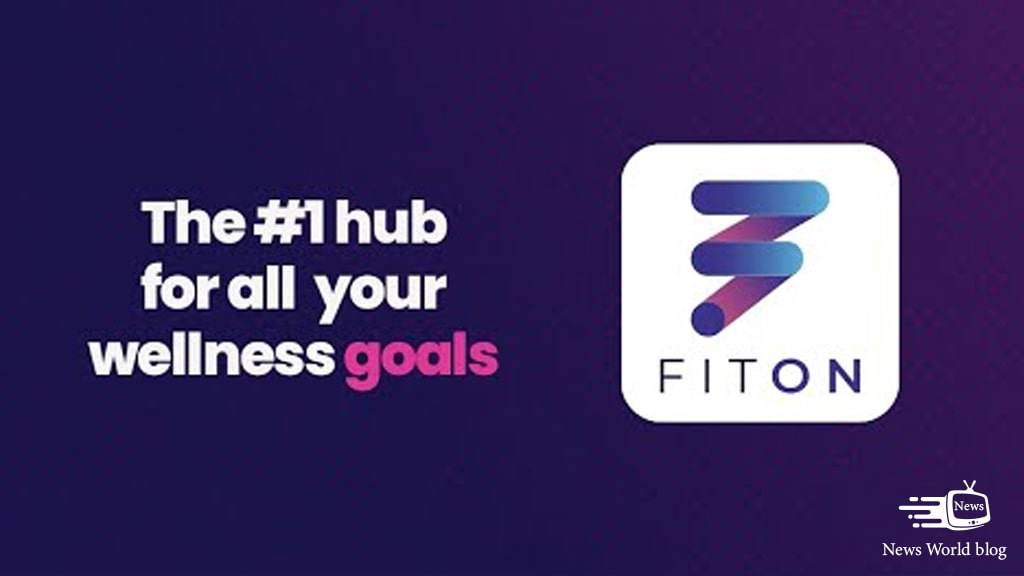
App Name & Brief Description: FitOn is a free fitness app featuring a large selection of live and on-demand exercise classes led by certified trainers. The app caters to a broad audience with a variety of workout styles, making it a versatile choice for those seeking instructor-led fitness experiences.
Key Features:
- Live and on-demand workout classes in various formats, including HIIT, yoga, Pilates, dance, strength training, and more.
- Classes offered at different durations to fit your schedule.
- Filterable library based on workout style, instructor, intensity level, and equipment needs.
- Community features allowing you to connect with other users and participate in challenges.
- Integration with Apple Health and Fitbit for data tracking.
Pros & Cons:
Pros:
- Extensive library of free, instructor-led classes.
- Variety of workout styles to keep your fitness routine interesting.
- Live classes offer a more interactive and motivating experience.
- Community features foster connection and accountability.
Cons:
- Limited ability to customize workouts outside of choosing pre-designed classes.
- Some advanced features, like personalized workout plans, might be offered in a paid subscription tier.
- Live class schedules may not always align with your availability.
Cost: Free
Target Audience: FitOn is a great choice for individuals who enjoy group fitness classes, appreciate instructor guidance, and want a free app with a variety of workout options. It’s ideal for beginners seeking guided routines, those who prefer a social fitness experience, and people who enjoy the convenience of on-demand and live classes.
3- MyFitnessPal:
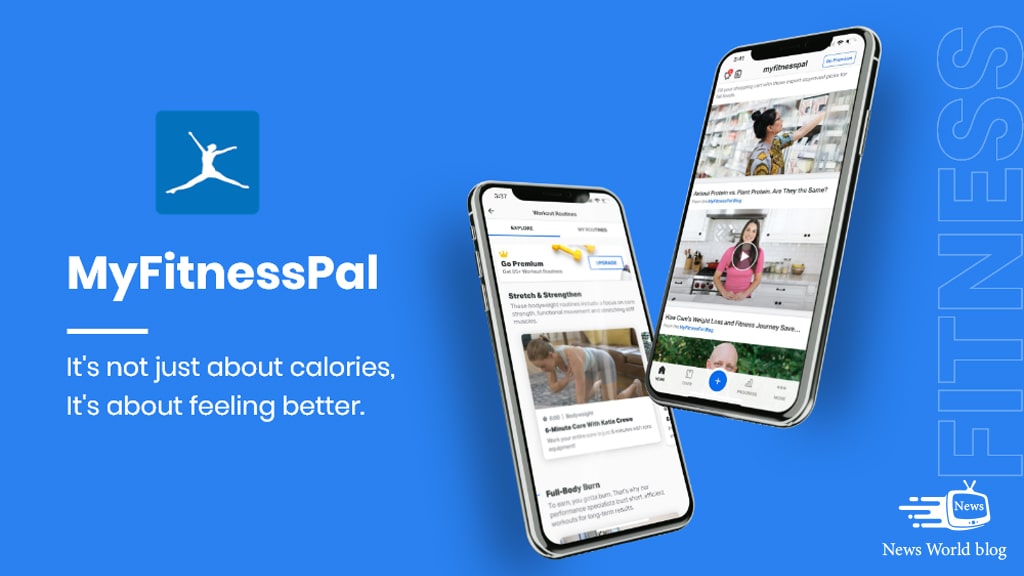
App Name & Brief Description: MyFitnessPal is a comprehensive calorie tracker and nutrition app. It boasts a massive food database allowing you to log meals, scan barcodes, and track your daily calorie intake. MyFitnessPal goes beyond simple calorie counting and provides tools to monitor macronutrients (carbs, protein, fat), set weight loss goals, and analyze your progress over time.
Key Features:
- Massive food database with millions of entries, including restaurant meals and grocery items.
- Barcode scanner for easy and quick food logging.
- Ability to track macronutrients (carbs, protein, fat) and set goals for each.
- Personalized calorie goals based on your weight, height, activity level, and goals.
- Progress tracking tools to monitor weight, body measurements, and nutritional intake.
- Integration with other fitness apps and wearable devices for comprehensive data analysis.
Pros & Cons:
Pros:
- Extremely user-friendly with a vast and searchable food database.
- Barcode scanning simplifies food logging and saves time.
- Tracks macronutrients in addition to calories, promoting a well-rounded approach to nutrition.
- Offers goal setting and progress tracking tools for motivation and accountability.
- Integrates with other fitness apps and wearables for a holistic view of your health.
Cons:
- Requires manual food logging, which can be time-consuming for some users.
- Free version might display limited information on micronutrients (vitamins, minerals).
- Some advanced features, like personalized meal plans, might be offered in a premium subscription tier.
Cost: Free (with premium features available)
Target Audience: MyFitnessPal is a great app for anyone looking to track their calorie intake, manage weight loss or gain, and gain a better understanding of their overall nutritional habits. It’s ideal for dieters, calorie counters, health-conscious individuals, and people who want a user-friendly app with a massive food database.
4- Strava:
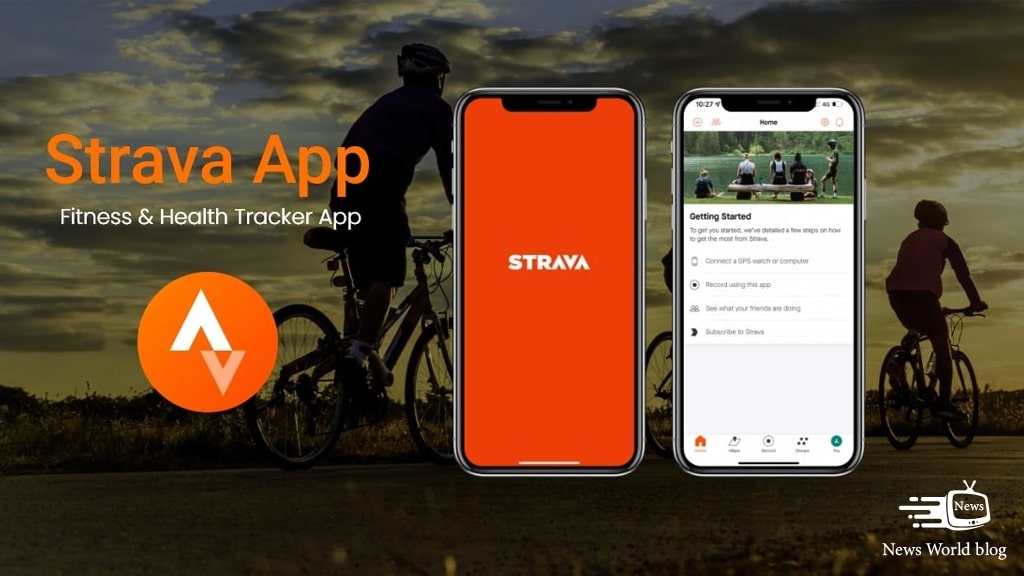
App Name & Brief Description: Strava is a popular app specifically designed for runners, cyclists, and hikers. It utilizes built-in GPS tracking to record your workouts, analyze performance metrics, and share your activities with friends. Strava fosters a strong social community amongst athletes, making it a motivating tool for those who enjoy a bit of friendly competition.
Key Features:
- Built-in GPS tracking to record distance, pace, elevation gain, and route details.
- Segment leaderboard system where users compete for the fastest times on specific routes.
- Detailed performance analysis with insights into pace, elevation, heart rate (requires compatible device), and power output (requires compatible cycling equipment).
- Social features allowing you to follow friends, share activities, and offer kudos (virtual high fives) for their achievements.
- Route discovery tools with recommendations based on user data and your location.
Pros & Cons:
Pros:
- Ideal for runners, cyclists, and hikers with dedicated tracking features and route analysis tools.
- Segment leaderboards provide a fun and motivating way to push yourself.
- Detailed performance analysis helps you track progress and identify areas for improvement.
- Strong social community fosters connection and accountability with fellow athletes.
- Route discovery tools help you find new and exciting paths to explore.
Cons:
- Primarily focused on running, cycling, and hiking – may not be suitable for other types of workouts.
- Advanced features like personalized training plans or heatmaps might be offered in a premium subscription tier.
- Social aspects might not appeal to everyone, especially those seeking a completely private workout experience.
Cost: Free (with premium features available)
Target Audience: Strava is a perfect fit for runners, cyclists, and hikers who want to track their workouts, compete with friends, and explore new routes. It’s ideal for those who enjoy a social fitness experience and are motivated by friendly competition.
5- Lose It!:
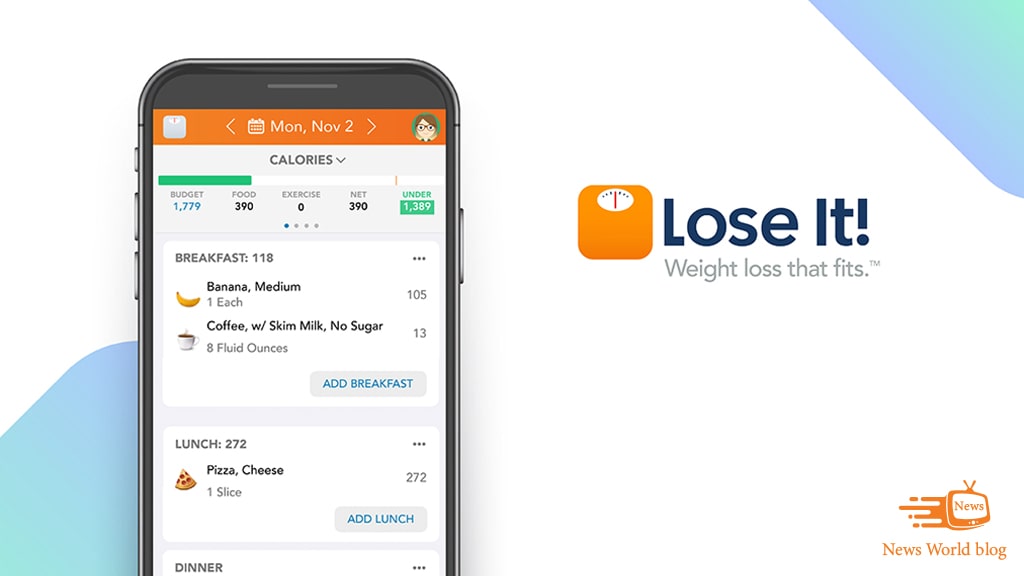
App Name & Brief Description: Lose It! is a well-respected calorie counter designed to help users achieve their weight loss goals. Similar to MyFitnessPal, it boasts a large food database with barcode scanning for easy meal logging. Lose It! goes beyond simple calorie counting by offering features like personalized weight loss goals, progress tracking, and engaging weight-loss challenges to keep you motivated.
Key Features:
- Extensive food database with barcode scanning for effortless meal logging.
- Ability to set personalized daily calorie goals based on your weight loss targets.
- Macronutrient tracking (carbs, protein, fat) to monitor your nutritional intake.
- Weight tracking and progress charts to visualize your journey towards your goals.
- Fun and engaging weight-loss challenges to add an element of competition and motivation.
- Community features allowing you to connect with other users and share your weight loss experiences.
Pros & Cons:
Pros:
- User-friendly interface with a large and searchable food database.
- Barcode scanning simplifies food logging, saving time and reducing errors.
- Personalized calorie goals ensure you’re on track with your weight loss plan.
- Macronutrient tracking promotes a well-rounded approach to weight management.
- Engaging weight-loss challenges keep you motivated and add a social element.
- Community features provide support and connection with others on similar journeys.
Cons:
- Requires manual food logging, which can be time-consuming for some users.
- Free version might limit access to certain features, like detailed nutrition reports or customized meal plans.
- Social aspects might not appeal to everyone, especially those who prefer a private weight loss experience.
Cost: Free (with premium features available)
Target Audience: Lose It! is a great app for anyone looking to lose weight in a healthy and sustainable way. It’s ideal for people who prefer a user-friendly interface, enjoy the motivational aspect of challenges, and want to connect with a supportive community. It caters well to dieters, calorie counters, and individuals seeking guidance on portion control and healthy eating habits.
6- 30 Day Fitness at Home:
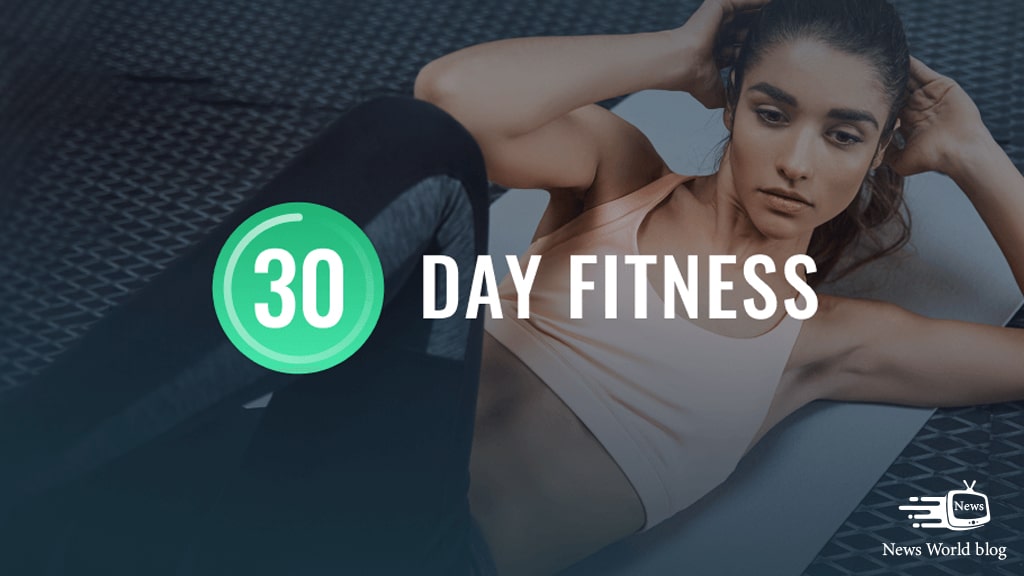
App Name & Brief Description: 30 Day Fitness at Home is a free app designed to help users achieve their fitness goals through structured workout plans. The app focuses on bodyweight exercises, making it a convenient option for those who prefer to work out at home with minimal equipment. It offers various workout plans with different durations (30 days, 60 days) catering to a range of fitness levels.
Key Features:
- Structured workout plans with varying durations (30 days, 60 days) to choose from.
- Focus on bodyweight exercises, eliminating the need for gym equipment.
- Difficulty levels categorized as beginner, intermediate, and advanced for progressive training.
- Daily workout routines with clear instructions and video demonstrations.
- Progress tracking tools to monitor workout completion and visualize your fitness journey.
Pros & Cons:
Pros:
- Completely free, offering structured workout plans without any subscription fees.
- Focus on bodyweight exercises allows for convenient workouts at home.
- Multiple plan durations (30 days, 60 days) provide flexibility to choose a program that fits your schedule.
- Difficulty levels cater to beginners, intermediate exercisers, and those seeking a challenge.
- Video demonstrations ensure proper exercise form, minimizing injury risk.
- Progress tracking tools help maintain motivation and accountability.
Cons:
- Limited exercise variety compared to apps with access to gym equipment.
- Might not be suitable for those seeking more intense or specialized workouts.
- Repetitive nature of 30-day or 60-day plans might lead to a lack of long-term challenge for advanced users.
- Free version may display limited features or contain advertisements.
Cost: Free (with potential in-app purchases for additional features)
Target Audience: 30 Day Fitness at Home is a great app for beginners, home exercisers, and individuals on a budget. It’s ideal for people who want structured workout plans with clear instructions and a focus on bodyweight exercises. It caters well to those seeking a convenient way to get fit at home without needing gym equipment.
Best Apps for Health and Fitness: Paid Versions
1- Apple Fitness Plus:
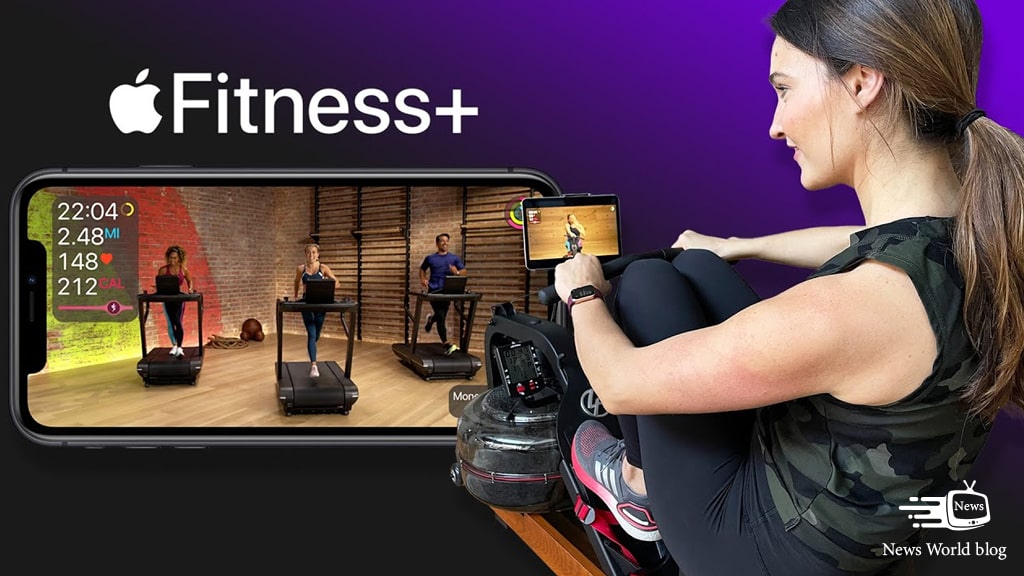
App Name & Brief Description: Apple Fitness Plus is a subscription-based fitness service offered by Apple. It provides a vast library of high-quality workout videos led by certified trainers, encompassing various styles like HIIT, yoga, strength training, Pilates, dance, and more. However, Apple Fitness Plus requires an Apple Watch to function, making it exclusive to Apple device users.
Key Features:
- Extensive library of on-demand workout videos led by charismatic and motivating Apple trainers.
- Diverse workout styles catering to various fitness levels and goals.
- Integration with Apple Watch for real-time workout tracking, including heart rate and calorie burn data.
- Personalized recommendations based on your workout history and preferences.
- Ability to share workouts with friends and participate in virtual group challenges (limited availability).
Pros & Cons:
Pros:
- High-quality production value with engaging and knowledgeable trainers.
- Wide variety of workout styles ensures you never get bored with your fitness routine.
- Seamless integration with Apple Watch provides comprehensive workout data analysis.
- Personalized recommendations help you discover new workouts and stay motivated.
- Opportunity to connect with friends through shared workouts and virtual challenges (limited).
Cons:
- Requires an Apple Watch, limiting accessibility for non-Apple users.
- Subscription-based model adds an ongoing cost to your fitness routine.
- Limited social features compared to some other fitness apps.
- May not offer specialized workout programs for specific fitness goals (e.g., weightlifting, running).
Cost: Requires a monthly or yearly Apple Fitness Plus subscription.
Target Audience: Apple Fitness Plus is ideal for Apple Watch users who enjoy high-quality workout videos, diverse exercise styles, and a seamless integration with their Apple ecosystem. It caters well to individuals seeking a well-rounded fitness program with a focus on motivation and personalized recommendations.
2- Peloton App:
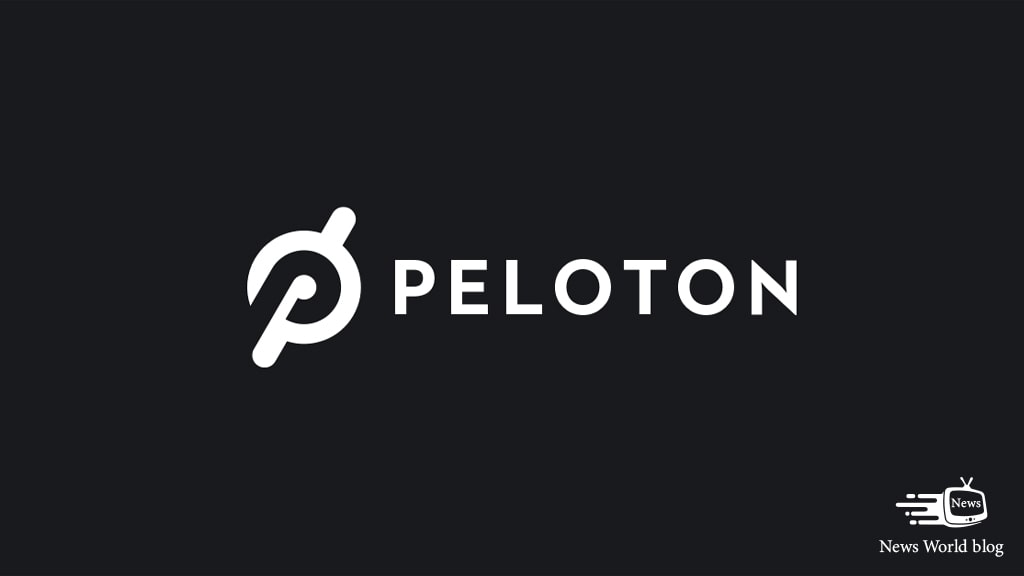
App Name & Brief Description: The Peloton App unlocks access to Peloton’s signature cycling and running classes, replicating the immersive experience of their high-end bikes and treadmills. Led by energetic instructors in Peloton’s studios, these live and on-demand classes offer a motivating and interactive workout environment, all accessible from your phone or tablet. However, a subscription is required to utilize the app’s full features.
Key Features:
- Extensive library of live and on-demand cycling and running classes led by Peloton’s renowned instructors.
- Variety of class types catering to different fitness levels, durations, and music genres.
- Live leaderboard functionality allows you to compete virtually with other riders or runners during classes.
- Integration with compatible heart rate monitors and cycling equipment (optional) for real-time performance tracking.
- Ability to schedule classes in advance and create personalized workout playlists.
Pros & Cons:
Pros:
- Access to Peloton’s signature cycling and running classes with high production value and engaging instructors.
- Live leaderboard feature fosters a sense of community and healthy competition.
- Diverse class library offers options for all fitness levels, interests, and time constraints.
- Compatibility with wearable devices allows for detailed performance analysis (optional).
- Scheduling and playlist creation tools enhance user control over their workout experience.
Cons:
- Requires a subscription, adding an ongoing cost to your fitness routine.
- Lacks the variety of workout styles offered by some other fitness apps.
- Primarily focused on cycling and running, may not cater to those seeking different exercise modalities.
- Live classes may not always align with your schedule, requiring flexibility.
- Limited social interaction compared to some fitness apps with broader workout categories.
Cost: Requires a monthly Peloton App subscription.
Target Audience: The Peloton App is ideal for individuals who enjoy the Peloton brand experience and are specifically interested in cycling or running workouts. It caters well to those seeking a motivating and interactive fitness environment with live instruction and a focus on cardio training.
3- Centr:
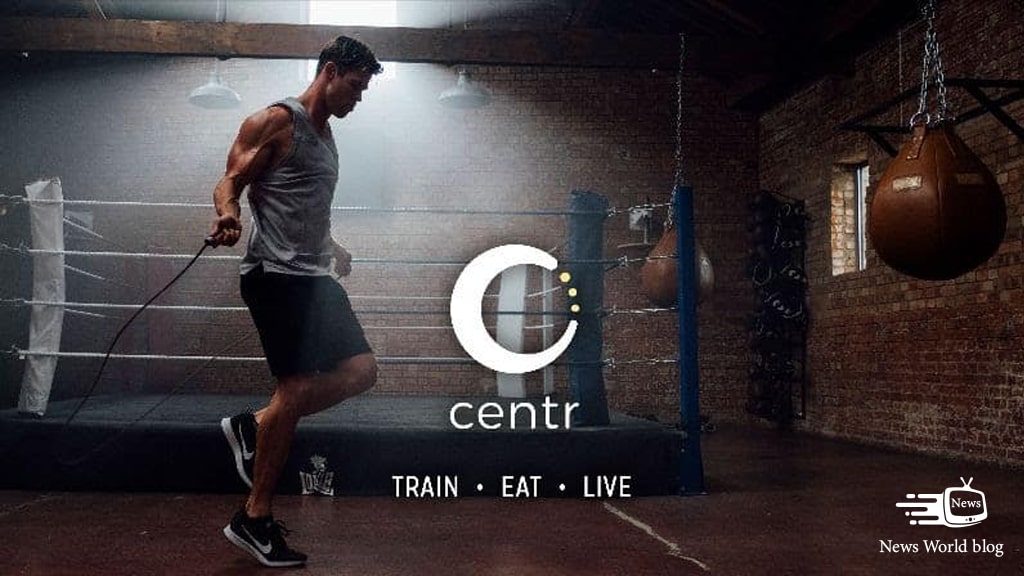
App Name & Brief Description: Created by celebrity trainer Chris Hemsworth and his team of experts, Centr offers a personalized approach to fitness and nutrition. This subscription-based app provides customized workout plans and meal recommendations tailored to your goals, preferences, and fitness level. Centr goes beyond just exercise routines, offering mindfulness and meditation features to promote holistic well-being.
Key Features:
- Personalized workout plans crafted based on your goals (weight loss, muscle building, etc.), fitness level, and equipment availability (gym, home, bodyweight).
- Variety of workout styles including HIIT, boxing, strength training, yoga, and more.
- Customized meal plans designed by nutritionists to complement your workout program and dietary needs (vegetarian, pescatarian, etc.).
- Mindfulness and meditation exercises led by experts to promote stress reduction and improved sleep.
- Integration with wearable devices for progress tracking and workout data analysis (optional).
Pros & Cons:
Pros:
- Personalized approach to fitness and nutrition with expert-designed plans.
- Variety of workout styles ensures you find routines you enjoy and stay challenged.
- Customized meal plans cater to dietary preferences and support your fitness goals.
- Mindfulness and meditation features promote overall well-being beyond just physical fitness.
- Integration with wearables allows for comprehensive data tracking and performance analysis (optional).
Cons:
- Requires a subscription, adding an ongoing cost to your fitness routine.
- Reliance on self-reporting for accurate personalization of plans.
- Limited social interaction compared to some other fitness apps.
- Might not be suitable for beginners who need more guidance on exercise technique.
- Celebrity association may not appeal to everyone seeking a personalized fitness program.
Cost: Requires a monthly or yearly Centr subscription.
Target Audience: Centr is ideal for individuals seeking a personalized approach to fitness and nutrition. It caters well to people who enjoy a variety of workout styles, appreciate celebrity trainer guidance, and want a well-rounded program incorporating mindfulness and healthy eating habits.
4- Jefit:
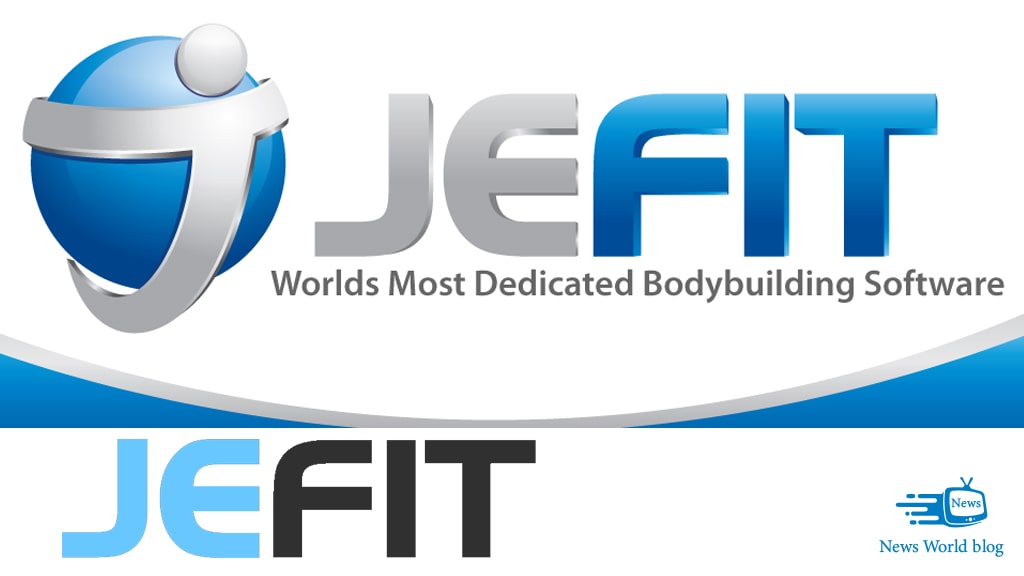
App Name & Brief Description: Jefit is a subscription-based app designed specifically for weightlifters and bodybuilding enthusiasts. It offers a comprehensive set of features for tracking workouts, creating custom routines, and monitoring progress. Jefit caters to a dedicated audience who are serious about weight training and appreciate a data-driven approach to their fitness journey.
Key Features:
- Extensive exercise database with detailed descriptions, proper form instructions, and alternative exercise options.
- Workout logging functionality to track sets, reps, weight lifted, and rest periods.
- Ability to create custom workout routines or choose from pre-designed plans.
- Progress tracking tools to monitor improvements in strength, muscle mass, and overall performance.
- Integration with wearable devices for real-time data tracking (optional).
- Advanced features like workout timers, rest periods, and superset/dropset functionality.
- Community features allowing you to connect with other weightlifters and share workout logs (limited availability).
Pros & Cons:
Pros:
- Ideal for weightlifters and bodybuilders with a vast exercise database and detailed workout tracking features.
- Ability to create custom routines or choose from pre-designed plans for flexibility.
- Progress tracking tools help you visualize your gains and stay motivated.
- Integration with wearables allows for advanced data analysis (optional).
- Advanced features cater to experienced weightlifters seeking specific training protocols.
- Limited community features offer some opportunity for connection with other weightlifters.
Cons:
- Requires a subscription, adding an ongoing cost to your fitness routine.
- May be overwhelming for beginners due to the focus on weight training and advanced features.
- Limited variety of workout styles beyond weight training.
- Social features are not as prominent as in some other fitness apps.
Cost: Requires a monthly or yearly Jefit subscription.
Target Audience: Jefit is ideal for weightlifters, bodybuilders, and powerlifters who are serious about their training and want a data-driven approach to progress tracking. It caters well to individuals who enjoy creating custom workout routines, appreciate detailed exercise information, and prioritize strength gains.
Conclusion
The world of health and fitness apps has exploded, offering a diverse range of tools to empower users on their wellness journeys. We’ve explored a selection of popular apps, each catering to specific needs and preferences.
Free Apps:
- Nike Training Club: Offers a vast library of free on-demand workouts led by certified trainers, catering to various fitness levels and goals.
- FitOn: Features a large selection of live and on-demand exercise classes led by certified trainers, ideal for those who enjoy instructor-led fitness experiences.
- MyFitnessPal: A comprehensive calorie tracker and nutrition app with a massive food database for logging meals and tracking progress.
- Strava: A popular app designed for runners, cyclists, and hikers, utilizing built-in GPS tracking and social features.
- Lose It!: Another well-regarded calorie counter with barcode scanning, goal setting, and weight-loss challenges.
- 30 Day Fitness at Home: Provides structured workout plans with bodyweight exercises, ideal for convenient home workouts.
Paid Apps:
- Apple Fitness Plus: Offers a variety of high-quality workout videos led by Apple trainers (requires Apple Watch).
- Peloton App: Provides access to Peloton’s signature cycling and running classes with live instruction (requires subscription).
- Centr: Created by celebrity trainer Chris Hemsworth, this app offers personalized workout and meal plans.
- Jefit: Focuses on weight training with exercise logging, workout creation tools, and progress tracking features (subscription required).
The Future of Health and Fitness Apps:
The future of health and fitness apps is brimming with exciting possibilities. Here are some potential trends to watch:
- AI-powered Coaching: Imagine an app that analyzes your workout data, suggests personalized training plans, and even provides real-time feedback on your form. Artificial intelligence has the potential to become a virtual personal trainer, offering personalized guidance and motivation.
- Wearable Device Integration: Fitness trackers and smartwatches are already collecting a wealth of data. Future apps might seamlessly integrate with these devices, providing even more comprehensive insights into your sleep patterns, heart rate variability, and overall health metrics.
- VR and AR Workouts: Virtual Reality (VR) and Augmented Reality (AR) technologies hold promise for immersive fitness experiences. Imagine running through a virtual park, practicing yoga in a serene mountain setting, or receiving boxing instructions overlaid on your real-world environment.
- Focus on Mental Health: With growing awareness of the mind-body connection, future apps might integrate features to promote mental well-being. Guided meditations, mindfulness exercises, and stress management tools could become commonplace within fitness apps.
- Holistic Wellness Approach: A shift towards a more holistic approach to wellness is likely. Apps might integrate fitness tracking, nutrition guidance, sleep monitoring, and mental health resources into a unified platform, creating a one-stop shop for total well-being.
Call to Action:
The world of health and fitness apps is vast and ever-evolving. Don’t be intimidated! Identify your goals, explore the options we’ve discussed, and consider what features best suit your needs. With the right app as your companion, you can take charge of your health and embark on a rewarding journey towards a happier, healthier you.
Common Questions About Health and Fitness Apps:
Before diving into the app store, it’s natural to have questions. Here are some common concerns to consider:
- Data Privacy: Fitness apps collect a wealth of personal data, including exercise logs, calorie intake, and potentially even GPS location. Always check the app’s privacy policy to understand how your data is collected, stored, and used. Choose apps with strong privacy practices and avoid those that seem overly intrusive.
- Safety Concerns: Some apps, particularly those with exercise demonstrations, might not provide adequate guidance on proper form. This can lead to injuries if exercises are performed incorrectly. Look for apps with certified trainers, clear instructions, and modifications for different fitness levels. Consider consulting a healthcare professional before starting a new exercise program, especially if you have any pre-existing health conditions.
- Subscription Fatigue: With so many subscription-based apps available, it’s easy to get overwhelmed by recurring costs. Carefully evaluate your needs and budget before committing to a paid subscription. Many free apps offer a good foundation, and you can always upgrade later if needed.
Remember, the best app for health and fitness is the one you’ll use consistently. By addressing these common concerns and considering your individual needs, you can find the perfect app to empower your wellness journey.

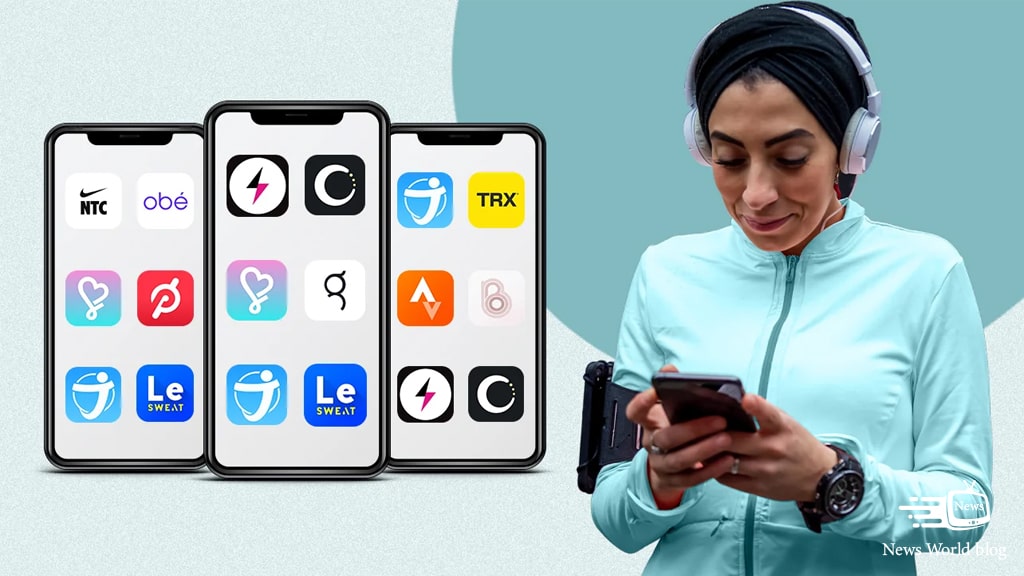

[…] List Top 10 Best apps for Health and Fitness, both free and paid version including their key features, functionalities, pros an […]